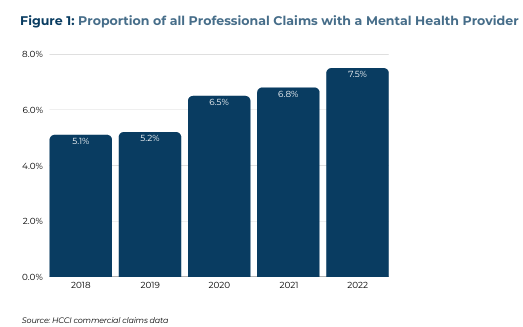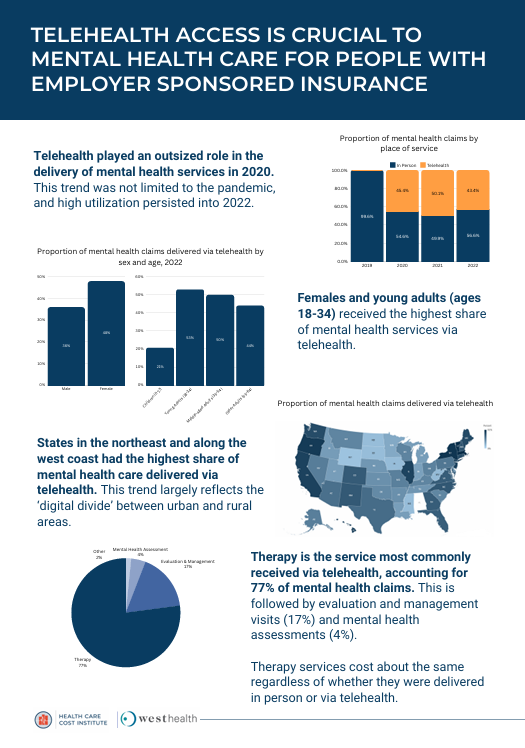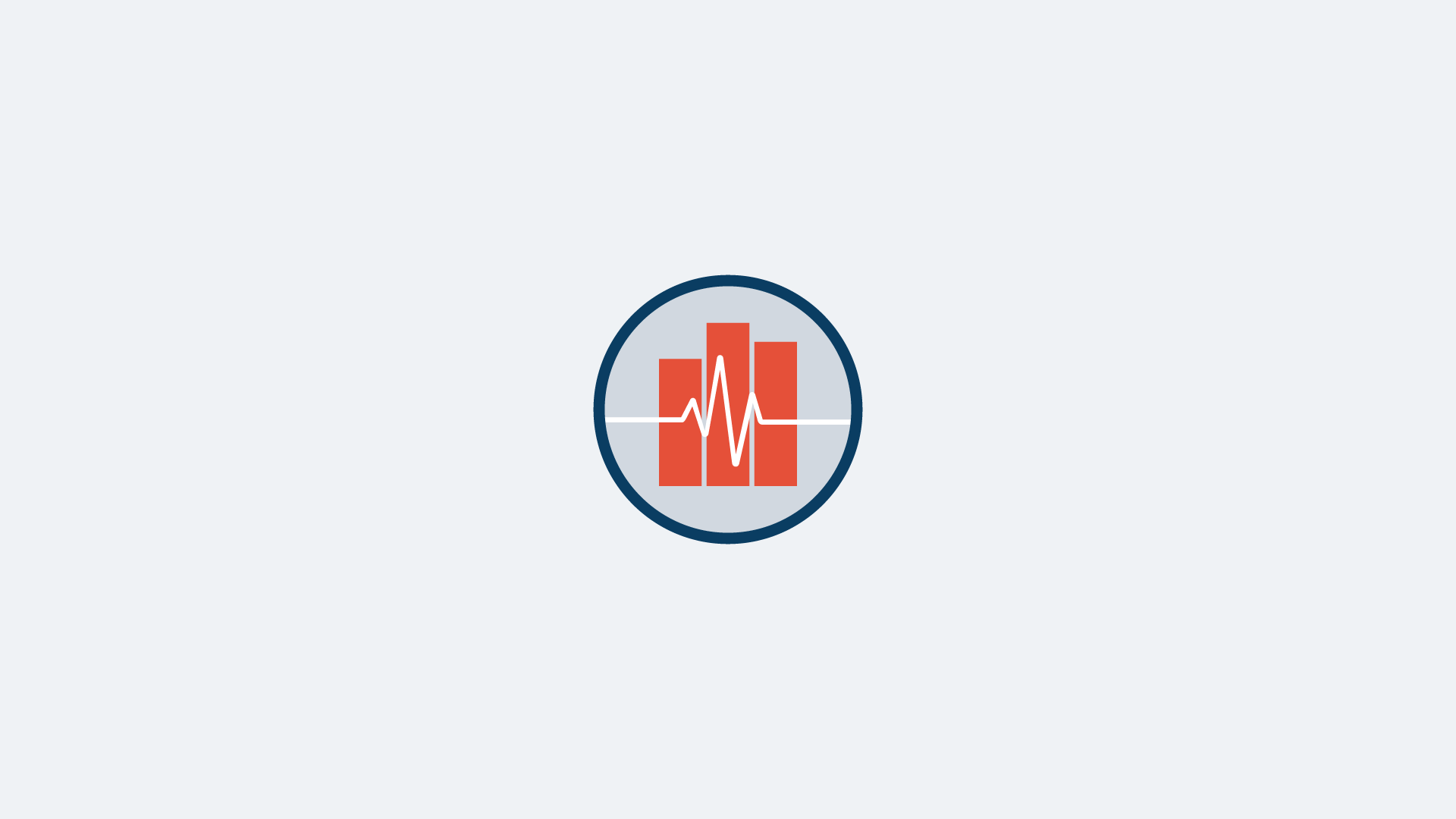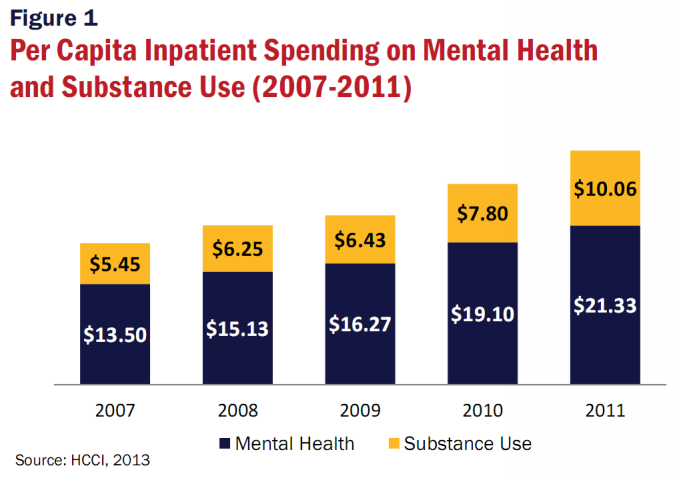Mental Health and Substance Use
-
Mental Health Service Use Among People with Employer-Sponsored Insurance
 Read more: Mental Health Service Use Among People with Employer-Sponsored Insurance
Read more: Mental Health Service Use Among People with Employer-Sponsored InsuranceThe Health Care Cost Institute (HCCI), in collaboration with West Health, conducted an analysis on the use of office-based mental health services among people with employer-sponsored insurance (ESI). We found that use of mental health services has increased from 2018-2022, and that therapy was the most commonly used service. We found an increase in spending…
-
Telehealth Access is Crucial to Mental Health Care for People with Employer-Sponsored Insurance
 Read more: Telehealth Access is Crucial to Mental Health Care for People with Employer-Sponsored Insurance
Read more: Telehealth Access is Crucial to Mental Health Care for People with Employer-Sponsored InsuranceThe Health Care Cost Institute (HCCI), in collaboration with West Health, conducted an analysis on the use of telehealth mental health services among people with employer-sponsored insurance (ESI). We found that telehealth played an outsized role in the delivery of mental health services starting in 2020, with over 40% of mental health visits occurring via telehealth from…
-
How common is out-of-network billing?
Tags: Commercially Insured, Emergency Room, Geographic Variation, Mental Health and Substance Use, Out-of-Network, Surprise Billing Read more: How common is out-of-network billing?
Read more: How common is out-of-network billing?Congress is considering legislation to address “surprise bills”, which occur when a person visits an in-network facility, but receives services from a provider that is outside of their insurer’s network. Bills in both the House and Senate include provisions to determine a benchmark rate for out-of-network payments based on what in-network providers of the same…
-
Antidepressant Use Increased for Individuals with a Mood Disorder with Employer-Sponsored Insurance
 Read more: Antidepressant Use Increased for Individuals with a Mood Disorder with Employer-Sponsored Insurance
Read more: Antidepressant Use Increased for Individuals with a Mood Disorder with Employer-Sponsored InsuranceDepression is a common mood disorder that affects how people feel, think, and conduct daily activities. Approximately 17 million adults (1 in 14) had at least one major depressive episode in 2017. Surveys have found that antidepressant prescribing has increased over the past two decades. For example, a 2017 National Center for Health Statistics survey found that,…
-
Selected Health Care Trends for Young Adults: 2007-2012
Tags: Affordable Care Act, Emergency Room, Inpatient Spending, Mental Health and Substance Use, Outpatient Spending Read more: Selected Health Care Trends for Young Adults: 2007-2012
Read more: Selected Health Care Trends for Young Adults: 2007-2012This issue brief is one of the first to examine health care trends for young adults (ages 19-25) with employer-sponsored insurance before and after implementation of Section 1001 of the Affordable Care Act that allows parents to include their adult children in family health plans.
-
Children’s Health Spending: 2009-2012
 Read more: Children’s Health Spending: 2009-2012
Read more: Children’s Health Spending: 2009-2012The Children’s Health Care Spending: 2009-2012 report shows that spending on health care for privately insured children increased between 2009 and 2012, rising an average 5.5 percent a year, with more dollars spent on boys than girls, and higher spending on infants and toddlers (ages 0-3) than any other children’s age group. Key Findings…
-
The Impact of the Mental Health Parity and Addiction Equity Act on Inpatient Admissions
Read more: The Impact of the Mental Health Parity and Addiction Equity Act on Inpatient AdmissionsThe 2008 Mental Health Parity and Addiction Equity Act (MHPAEA) sought to improve access to mental health and substance use services. The Health Care Cost Institute, Inc. (HCCI) analyzed mental health, substance use, and medical/surgical inpatient per capita spending, utilization, prices, and out-of-pocket payments for individuals younger than age 65 and covered by employer-sponsored health…

